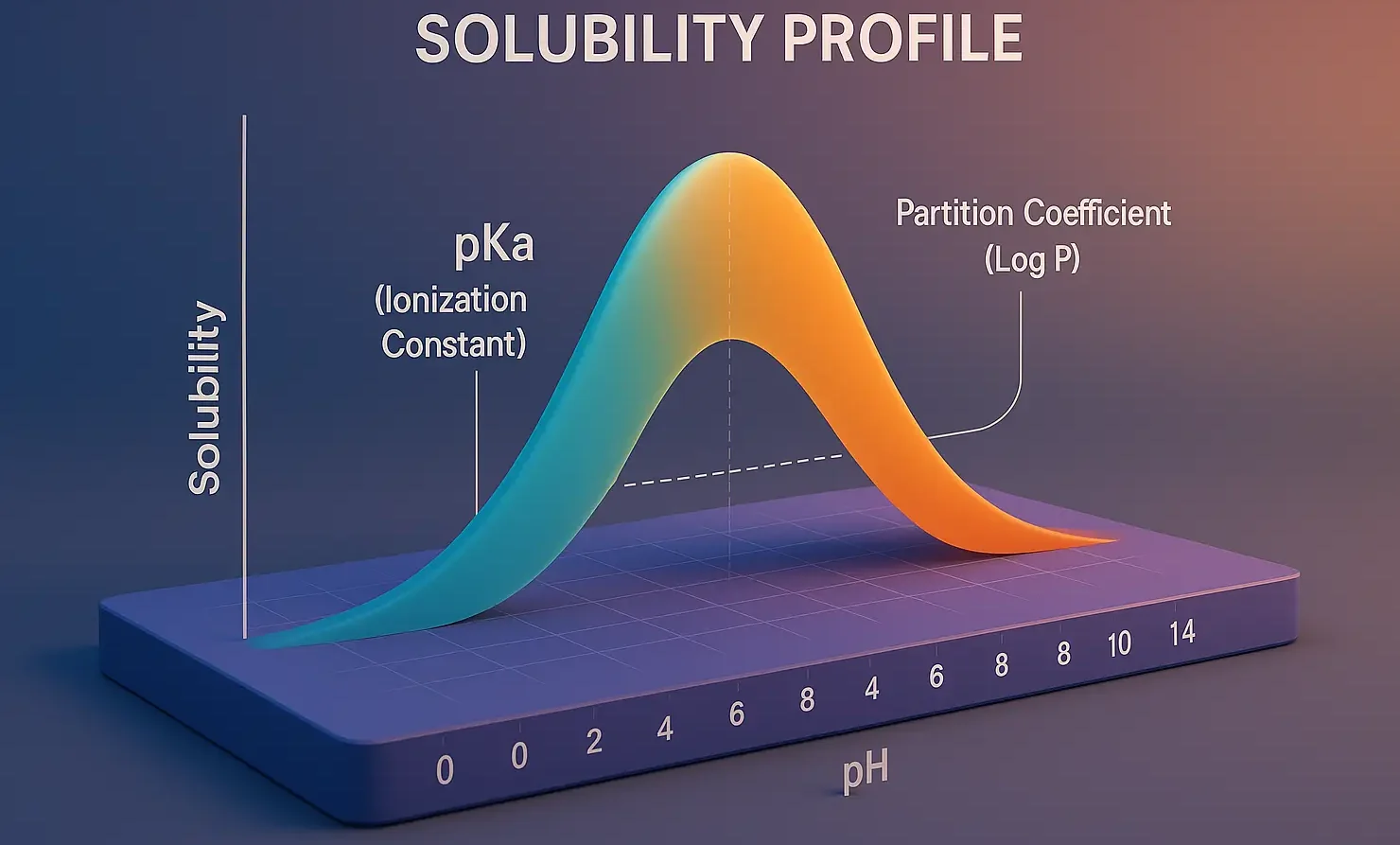- The solubility profile helps determine how a drug dissolves in bodily fluids, influencing its absorption and bioavailability.
- pKa, pH, and Log P are key parameters that affect a compound’s solubility profile and its formulation.
pKa (Ionization Constant):
-
Definition:
- The pH at which 50
-
Importance:
- Ionized drugs are more soluble in water, while unionized drugs have higher membrane permeability.
- Helps predict solubility and absorption in various pH conditions of the gastrointestinal tract.
-
Example:
- A drug with a pKa of 4 will be more ionized at pH below 4 (acidic medium) and unionized at pH above 4 (basic medium).
Advertisements
pH and Solubility:
-
Definition:
- The solubility of a drug is influenced by the pH of the medium.
-
Importance:
- Determines whether the drug dissolves efficiently in physiological fluids.
- Helps in selecting buffer systems or pH adjustments to improve solubility.
-
Example:
- Weakly acidic drugs dissolve better in basic pH, while weakly basic drugs dissolve better in acidic pH.
Advertisements
Partition Coefficient (Log P):
-
Definition:
- The ratio of a drug’s solubility in oil (lipophilic phase) to water (hydrophilic phase).
- Expressed as Log P:
- $\log P = \log \left( \frac{\text{Concentration in octanol}}{\text{Concentration in water}} \right)$
-
Importance:
- Determines lipophilicity, which affects membrane permeability and bioavailability.
- Low Log P (<1): Highly water-soluble but poorly absorbed.
- High Log P (>3): Poorly water-soluble but membrane-permeable.
-
Example:
- Drugs with moderate Log P (1–3) show balanced solubility and permeability for oral absorption.
Advertisements

